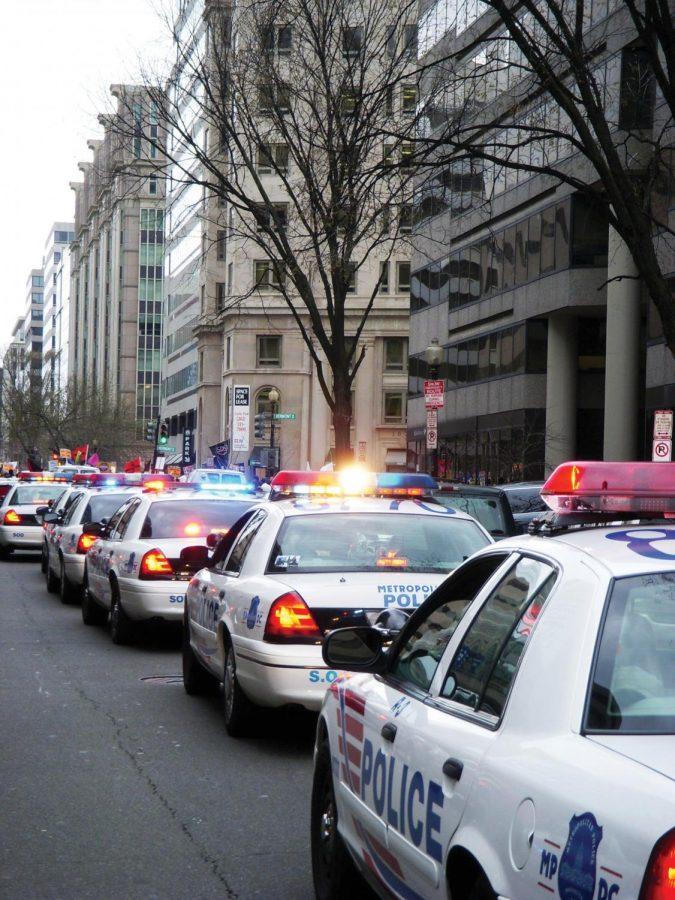Students discuss use of excessive force by law enforcement
January 15, 2015
Police brutality. Excessive force. These words have been plastered in media around the world recently. One event in particular was the case of Eric Garner, who died after suffocating while he was put in a chokehold by a New York police officer. Incidents like Garner’s have Americans questioning if police take things too far, too often.
Sophomore Leslee Tank said she straddles the fence when it comes to police brutality and believes it is a case-by-case question.
“Some cases are absolutely disgusting, like infallible cases of a power-hungry officer exerting his or her position over a citizen,” she said. “It’s actually one of the most hypocritical and cowardly things that can be done. On the flip side, it’s the officer’s job to uphold the law and sometimes by force.”
Police officers follow a protocol referred to as force continuum when they are tasked with deciding what actions to take in a situation, said Shequanda Jenkins, UNA police officer.
“It’s something that we’re taught from the time we go to the academy, and every year we work through different things on the force continuum,” she said.
The first step of force continuum is officer presence, Jenkins said.
“You coming on the scene is sometimes enough to change the situation,” she said.
Officers begin with verbal direction and move up the steps of the force continuum. They must stay one step above a person being non-compliant, Jenkins said.
“Sometimes you can simply talk through the situation,” she said.
An officer can go from the first step to the last step, deadly force, in three to five seconds, but every situation and every officer is different, she said. Some may pull a Taser, and some may pull their weapon if they feel in immediate danger.
“I think in some cases (police) are using excessive force,” said freshman Stephanie Smith. “I think there are other ways to take down a suspect.”
Smith said she thinks officers should use their own judgment in situations.
“You only have three to five seconds to make a decision, but a person has a lifetime to critique what you decided to do,” Jenkins said.
Sophomore criminal justice major Ally Judd said she believes excessive force was used in recent cases.
“I understand excessive force more than I did before because they’re trying to protect themselves first,” she said. “That’s everybody. You always try to protect yourself first. If you see someone reaching into his or her pocket, it could be a cell phone or it could be a gun. You never know.”
Senior Elliott Hacker said he likes to see both sides of the story before making a decision.
“When you look at the way they’re using force in some ways it does seem excessive, but at the same time I think they have a right to,” he said. “I don’t think you can know unless you’re actually there to see what’s happening.”
UNA police officers participate in law enforcement training at the Public Safety Institute, on UNA’s East campus, Jenkins said.
The training involves but is not limited to: learning how to exit the vehicle at a traffic stop, female officer survival training, officer survival and what to do if your partner gets shot.
“It’s hands-on,” Jenkins said. “One day (of training) is in class room, the next two days are usually all hands-on.”
Officers, including those at UNA, log hundreds of hours in training every year, Jenkins said.
“I’ve got somewhere between 100 and 150 hours,” she said.
Sophomore Brianna Coleman said one of the biggest problems is an officer having the right to use excessive force in most situations.
“I don’t see the good in having officers trained in shooting to kill,” she said. “I understand self-defense and keeping others safe, but ending lives should not be taken as lightly as it is when a police officer does it in the name of justice.”
Sophomore Shaquielle Shoulders said there should be a limit to how much force is used to bring a person down.
“Pulling a gun is only necessary when the situation gets to the point where the other person pulls their gun and is going to harm somebody and you don’t have anything that’s going to reach them,” he said.
In addition to the force continuum, there is a code of ethics in place for all officers. The code describes what an officer should and should not do publicly, Jenkins said.
The Law Enforcement Code of Ethics states, “With no compromise for crime and with relentless prosecution of criminals, I will enforce the law courteously and appropriately without fear or favor, malice or ill will, never employing unnecessary force or violence and never accepting gratuities.”
“I think here at the university it’s pretty much your decision to make, but in all reality, at the end of the day it comes down to that officer — no matter what,” Jenkins said.












